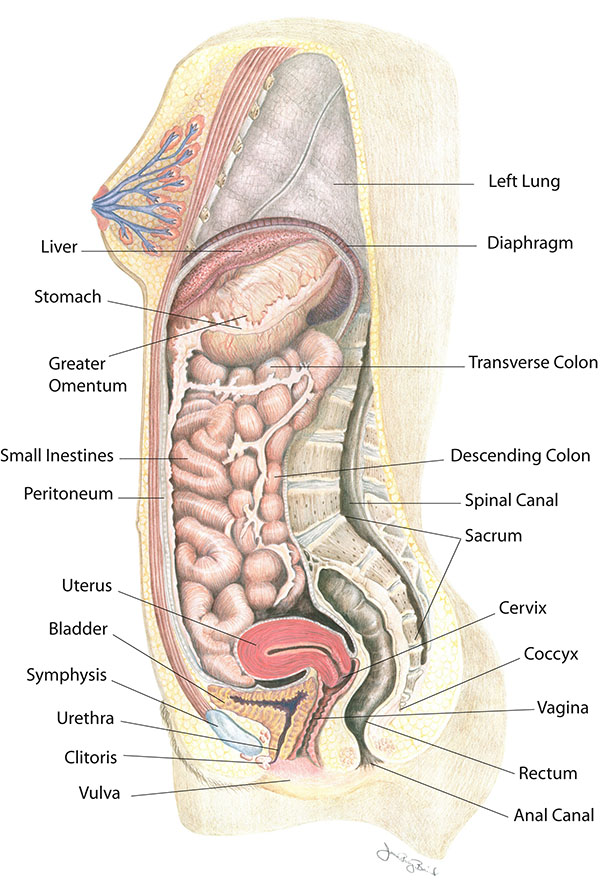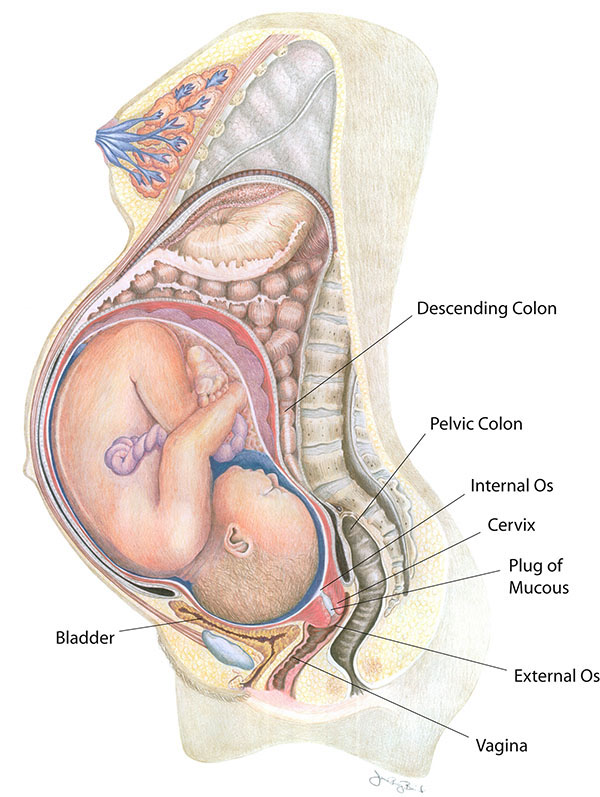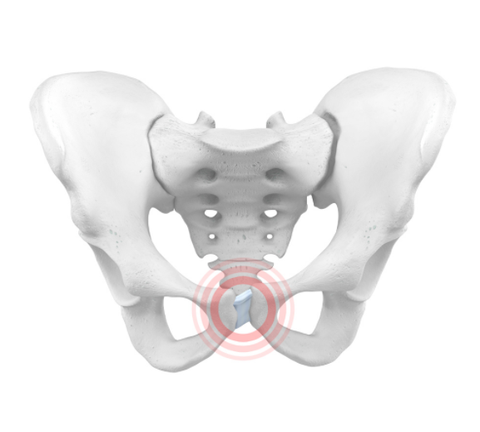Are you expecting? Did you know that pelvic floor physical therapy (PFPT) can be a great way to prepare your pelvic floor and vaginal tissues for delivery? It can also decrease your chances of becoming incontinent postnatally!
As your body goes through so many drastic changes, your pelvic floor may need a little extra care. Research has shown that women who participate in PFPT while pregnant, have a decreased chance of incontinence following delivery. Although it hasn’t been formally studied, we have also seen clinical evidence for an overall decrease in pelvic floor dysfunction postnatally in women who had PFPT perinatally.
Below, the first illustration shows a female body before pregnancy; while the picture on the second illustration is a woman who is 40 weeks pregnant.


Some things to take note of in these images:
- Stretching of the uterus to encapsulate the fetus
- Position of the head directly on the bladder and pubic bone at end stage pregnancy
- Pressure placed on the rectum by the fetus
- Fetal pressure placed on the lumbar spine and consequently pelvic ring due to pressure on pubic bone. This, in turn, will affect the sacrum and tailbone.
Childbirth is truly miraculous as a woman’s body is transformed to support life. As we saw from the above list, a woman’s uterus has the most drastic change. As the uterus expands and creates more space for little babe, common side effects occur.

We all know that pregnant women tend to urinate more frequently, and now we can see why. As the pressure builds on top of our bladder, this pressure will affect our pelvic floor. As pelvic floor physical therapist’s, we help keep a healthy balance of pelvic floor engagement, while also working to relax the pelvic floor when we aren’t needing to contract it.
Another common pregnancy symptom is either constipation or diarrhea. The main cause for this is due to hormone changes, however we can also see some excess pressure being placed on our rectum as little babe grows. This can lead to less space for stool to move and therefore an increase in constipation symptoms, which occurs most commonly in the third trimester. As stool travels through our colon, reaches our rectum and gives a very fair argument to evacuate from the space, it needs to travel through our pelvic floor. There’s little to do about the pressure being placed on our rectum, however PFPT’s help to focus on the pelvic floor muscles to be sure you are able to fully relax to allow the stool to evacuate. We can also help give you tips on toilet positioning and pushing techniques that will transfer directly to that beautiful period of time you will deliver your baby.
Pubic bone pain or better known as symphysis pubis diastasis (SPD) is a natural process during the third trimester as the hormone relaxin courses through women’s bodies to prepare for the expansion of the pelvic ring during delivery.

Our bodies are really smart, but unable to only release relaxin to the pelvic ring; instead, women will feel the effects throughout the whole body, perhaps noticing general laxity in their joints. This isn’t a process you want to stop, however it can cause more discomfort and pain in the low back, sacrum, and tailbone. Pelvic floor physical therapists are here to retrain posture and teach proper engagement of the stabilizing muscles that surround the pelvic ring. Relaxin targets the ligaments, so the muscles actually want to contract more to help out. We just need to be sure the muscles are working and coordinating together versus having certain groups take over and cause an imbalance or overuse.
The main goal of PFPT treatments during pregnancy is to ease pregnancy symptoms, prepare your body for delivery (even if that means caesarean section), and provide tools for a faster recovery. We can see pregnant women throughout the whole process and postpartum to check in with the recovery and coach them on learning how to coordinate muscle contractions again. If you have been seeing a PFPT through the whole process, re-learning coordination of core and pelvic floor muscles tend to come back a little quicker from muscle memory.
Pelvic floor physical therapists are here to help you through this beautiful, yet challenging process. Reach out to us with any questions you may have or just schedule an appointment to get started as we help guide you through this time.

